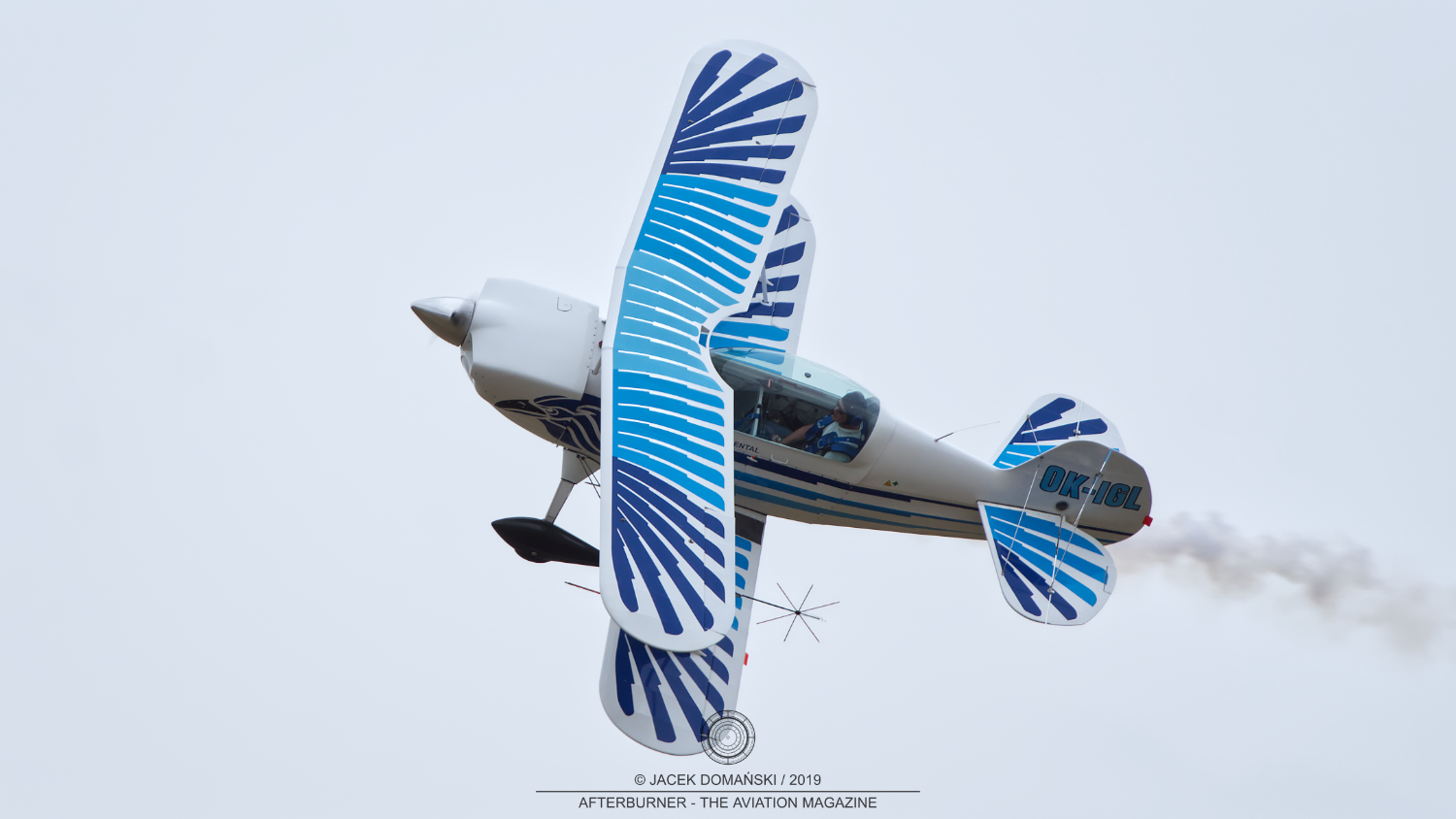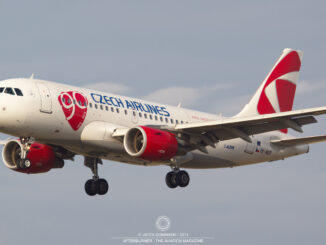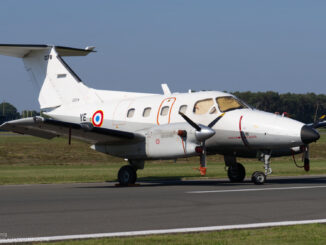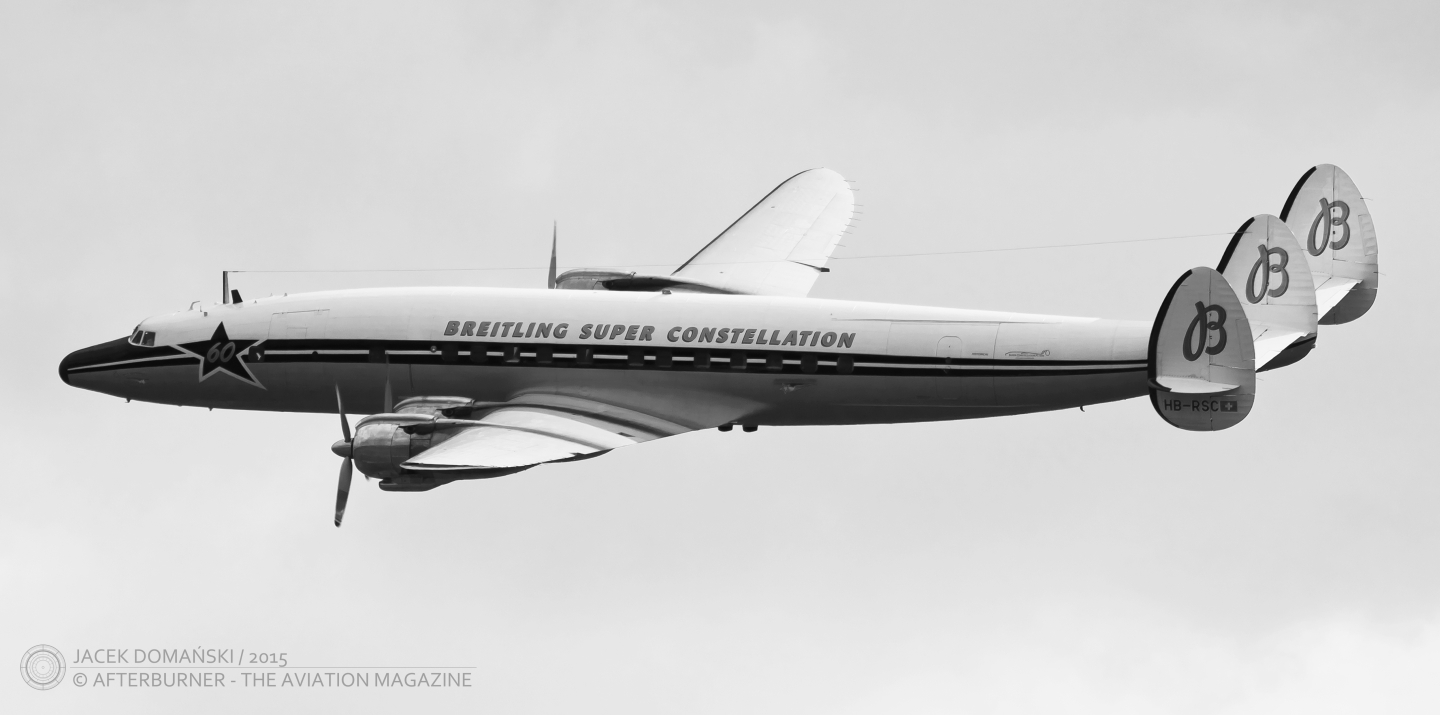 Christen Eagle II (c/n PFA 138-14627, OK-IGL), flying display at Memorial Air Show 2019, Roudnice nad Labem airfield, June 2019.
Christen Eagle II (c/n PFA 138-14627, OK-IGL), flying display at Memorial Air Show 2019, Roudnice nad Labem airfield, June 2019.
In the 1960s, Frank L. Christensen, an American student of the senior year at Stanford University, founded his first company named Tempress Industries. It was a time of revolution in technology, therefore, the Christensen´s company focused on new solutions, such as semiconductors, microchips and special machine tools. Within a few years, Tempress Industries have grown to hundreds of employees.
It was the right moment for Christensen to sell the factory and retire. He bought a ranch in Hollister, California, built there a private airfield and focused entirely on his passion to aviation.
Frank Christensen learned to fly yet as a teenager. In the late 1960s, he ordered at the Cavalier company a conversion of P-51D to an Executive Mustang, which he used for personal needs (later, the aircraft became known as ´Paul I´/N3451D).
After retiring from his company, Christensen became a competition pilot and then the manager of the US Aerobatic Team. In 1969, Christensen won the Advanced category at the US National Aerobatic Championships, flying a Pitts S-1S. Moreover, he also began with development of products for aerobatic aircraft which soon after were manufactured in his new company, Christen Industries.
Christensen wanted to acquire rights to manufacture the Pitts Special at his factory but was refused. Undaunted by that setback, he decided to create his own aerobatic biplane, able to compete with the Pitts aeroplanes.
The first version of the aeroplane received a designation Christen Eagle I. It was a single-seat biplane, powered by 260 hp Lycoming AEIO-540 engine and built in only four examples. Three of them were given to Tom Poberezny, Charlie Hillard and Gene Soucy, the aerobatic pilots that had flown together, with the Pitts Specials, as the Red Devils team.
Reportedly, Christensen met with the Red Devils at Oshkosh air show and made a quick deal. Soon after, the team changed the aircraft to Eagle I and was renamed the Eagles Aerobatic Team. The team´s outstanding performances at domestic aviation events became the best advertising for Christensen´s aircraft.
In February of 1977, the commercial version of the aircraft, designated Eagle II, successfully performed its maiden flight. It was a small aerobatic biplane of conventional configuration, with fixed tailwheel undercarriage, two tandem-seats and dual controls. The aeroplane was equipped with Lycoming AEIO-360 powerplant, generating 200 hp.
Although the aircraft was of conventional design, it was the marketing idea behind that became revolutionary. The Christen Eagle was offered in kit form for building at home, together with a professionally illustrated 300-page instruction manual presenting the entire construction process in steps. In this way, Christensen set new standards in the homebuilt aviation.
It was not only the first time, the aerobatic-capable aeroplane was offered in the kit for self-build. First and foremost, Christensen marketed the Eagle II as it could be built by anyone. And, to a great extent, he was right.
The Eagle II achieved great success on the market. The Christensen´s biplane kit fulfilled many aviation dreams and was sold in hundreds of examples.
Shortly after, Frank Christensen bought not only the rights to manufacture the Pitts Special, but also the entire Pitts factory, located in Afton, Wyoming. For a couple of years, he produced both aircraft, as well as developed a tandem two-seat, high-wing light utility aircraft, designated Husky (more about this aeroplane in our article from Photo of the Week series – Christen Industries A-1 Husky).
At the beginning of 1990s, Christensen sold all his aviation assets to Aviat Aircraft, which continues with production and sales of upgraded variants of all three aircraft – Husky, Pitts and Eagle – until today.
The Eagle II pictured above was manufactured in 2007, in the United Kingdom. Initially, the aeroplane was registered G-CENC, then sold to Sweden and re-registered as SE-XZN.
In 2014, the biplane was acquired by new owner from the Czech Republic. In September of that year, the Eagle II was officially registered OK-IGL, in Experimental category, and as the first aircraft of that type in the country. Currently, the aeroplane is being based at Příbram airfield.



